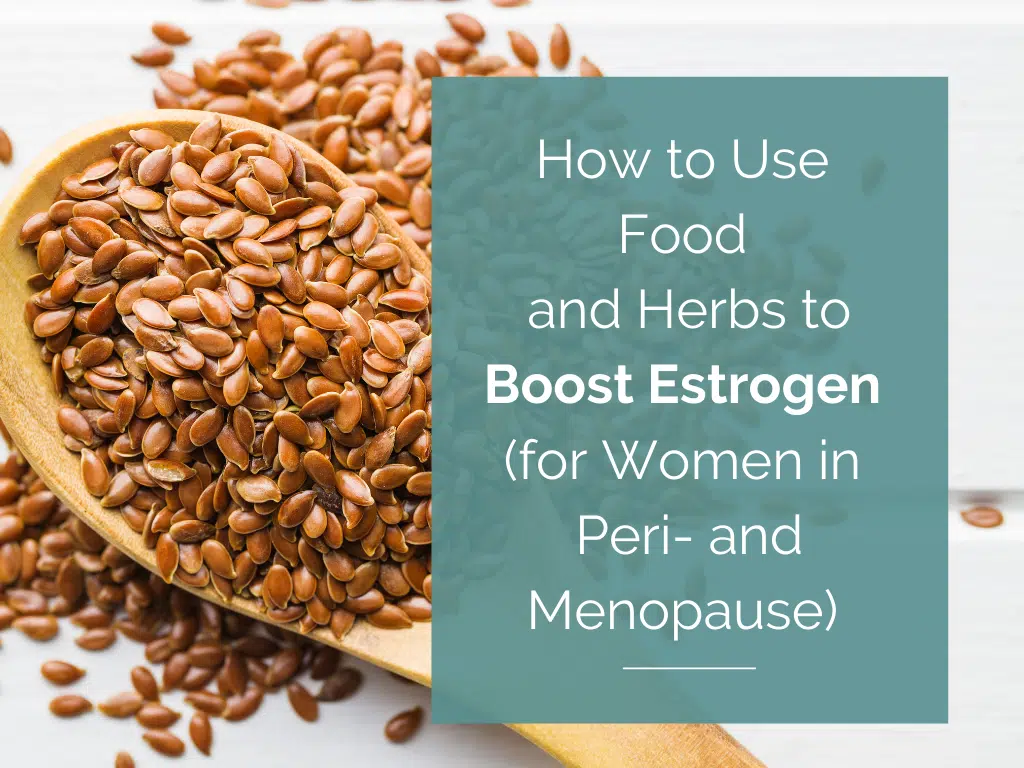
What You Will Learn in This Article
- Why we need estrogen as women
- Why “dirty” estrogens are the real issue
- Symptoms of low estrogen
- Importance of correcting low estrogen
- What to eat to raise estrogen
- Herbal solutions for increasing estrogen (before doing Bioidentical Hormones)
While many women suffer from estrogen levels that are too high, there are plenty of us out there whose estrogen levels have fallen too low. That especially applies as we approach perimenopause and menopause. Many women opt for hormone replacement therapy (HRT) for symptoms of low estrogen, like hot flashes and night sweats. Is HRT the only way to correct your low estrogen levels? Maybe (and please seek out bioidentical over traditional HRT), but not necessarily. Especially so if you prefer to choose more natural options first.
Many women think twice about traditional HRT. In 2002, the National Institutes of Health announced that HRT did more harm than good and actually increased the risk of both breast cancer and cardiovascular disease in women. Trials were stopped early because of that announcement. Later, the research was reevaluated, and it was found that starting age and the use a premarin (synthetic progesterone) were the culprits. (1, 2)
However, HRT is still very controversial and many women are seeking out natural alternatives to HRT.
While research doesn’t currently support replacing HRT with phytoestrogen-rich foods and herbs, the good news is that there’s no downside to consuming these plant-based estrogens in normal dietary amounts. They may certainly also help to boost declining estrogen levels. (3)
In this article, we’ll cover some of those foods and herbs you can use to support healthy estrogen for vibrant health and graceful aging. We’ll even include some recipes to make it easy to incorporate into your daily routine.
Why We Need Estrogen
After reading about estrogen dominance on this website, many women may have come to the conclusion that estrogen is what causes all the problems.
Not so.
It’s only an issue when your body either breaks down the estrogens into “dirty” estrogens (or antagonistic metabolites), or your estradiol-to-progesterone ratio is off (typically you have more estradiol and too little progesterone).
As women, we’re dependent on estrogen to make us feminine, give us our womanly figure, and even make our skin glow. Here are just a few examples of the good things estrogen does for us: (4, 5)
- Promotes plump breasts
- Gives us hips and thighs
- Gives us menstrual cycle
- Promotes fertility
- Protects our bones
- Promotes bone strength (alongside progesterone, minerals, and vitamins such as calcium, magnesium, D3, K2, boron)
- Supports a good mood
- Protects the brain from cognitive decline
- Nourishes the heart (protects against cardiovascular disease)
In short, estrogen is important for vibrant health and energy. And, it makes us beautiful and attractive. We’re definitely not at war with estrogen; we just need to make sure it is working for us and not against us.
Can you be in peri- or menopause and experience Estrogen Dominance?
Yes, absolutely and this is the case with many women, you are not alone in this. I know it sounds counterintuitive to think that in spite of having low estrogen, a woman can experience estrogen dominance. Ponder on this scenario: most women who develop ER+ (estrogen receptor-positive) breast cancer are often in peri- and menopause. Their estrogen is low, yet they get breast cancer that is estrogen dependent (and Estrogen Dominance fuels it). Why?
The answer is: too much estrogen isn’t the problem here; hormone ratios and metabolism are the defining issue.
To understand more, please see the three scenarios Estrogen Dominance can manifest:
- You’re creating “dirty” estrogen metabolites – This happens when you’re creating too many 16 hydroxy-estrone (aka “dirty”) metabolites when you break down estrogen.
- Your Progesterone-to-Estrogen Ratio is off – That’s when you don’t have enough progesterone to balance out the aggressive estradiol (E2). That can happen even if both progesterone and estrogen are low.
- Your Estrogen Quotient is off – That’s when you have too much of the aggressive estrogens, estrone (E1) and estradiol (E2), as compared to estriol (E3), the protective estrogen.
This is how this can happen: even though your estrogen levels are low, the way you break down these estrogen (however low they are), is unfavorable and you are producing too many “dirty” estrogens. It could also be that your progesterone is also very low and even lower than estrogen – being another form of estrogen dominance.
I’ve written a book on this topic – Overcoming Estrogen Dominance.
For this article, we’ll be focusing on low estrogen. So, what are some things to look for if you think you have low estrogen?
Symptoms of Low Estrogen
There are some tell-tale symptoms that your estrogen is low. If you have a combination of the following, it may be worth getting your levels checked: (6)
- Cognitive decline (memory, concentration)
- Increasing LDL (“bad”) cholesterol and declining HDL (“good”) cholesterol
- Night sweats or hot flashes
- Leaky or overactive bladder
- Overly emotional
- Mood changes (anxiety, depression, lethargy)
- Trouble falling asleep and staying asleep
- Aching joints
- Fatigue/muscle weakness/no interest in exercise
- A diagnosis of osteoporosis or osteopenia
- Vaginal dryness, irritation, or loss of feeling
- Dry, sagging skin or thinning skin
- Dry eyes
- Shrinking, sagging breasts
- Irregular periods (or no periods)
- Low sex drive
- Painful sex
- Abdominal weight gain/”love handles”
If you have a lot of these symptoms, it’s a good idea to get some testing (we’ve partnered with Your Lab Work, see the DUTCH test). You don’t want to ignore low estrogen levels because it can lead to health issues in the future.
Importance of Correcting Low Estrogen
The reason why it’s so important to correct low estrogen levels is that it will greatly improve your experience of both perimenopause and menopause. Not only that, but consider all the benefits of estrogen listed above; your cardiovascular and cognitive health would probably be on top of your list.
Low estrogen levels are associated with these conditions:
Raise Estrogen Levels with Foods and Herbs
Listed below are some foods that are rich in phytoestrogens. You can easily include them in smoothies, soups, and puddings.
Flaxseed
Flaxseed is rich in lignans that can help boost estrogen levels. The flax phytoestrogens can support the body’s estrogen balance. From research, we know that flaxseed can improve fertility and reduce hot flashes and vaginal dryness. These are all symptoms of low estrogen levels. (11, 12)
Learn more about flaxseed and how it works as an estrogen adaptogen by reading this article.
Tip: Before deciding on bioidentical hormone replacement therapy, try 2 tablespoons freshly ground organic flaxseed a day (it’s easy to add to porridge or smoothie) and see if symptoms improve.
Try this flax snack: 5-Spice Flax Seeds and Pepitas.
If eating flaxseed every day creates more symptoms of estrogen dominance or GI distress, which can happen in some women, another solution is Wellena’s Estrogen Boost. This convenient and easy-to-take supplement is made with well-researched botanicals—hops and Norwegian spruce—which are shown to naturally and gently elevate “good” estrogens.
Soy
Soybeans are rich in plant estrogens and can also be used if your levels are low. However, be sure to buy organic (non-GMO), as soybeans are one of the most commonly genetically modified crops. (13)
Phytoestrogens in soy called soy isoflavones can be very helpful for bringing estrogen back up. Women who grew up in Asia, where soy is commonly used in cooking, aren’t nearly as likely to have hot flashes as American women. But they are also better at metabolizing the soy. (14, 15)
An analysis of 16 studies on soy isoflavones found that they were 25% effective in improving hot flashes compared to estradiol (hormone replacement), which was 44.9%. It also took longer for the soy isoflavones to “kick in” — 48 weeks vs. about 3 weeks for the estradiol. (16)
While the phytoestrogens in soy can be helpful, especially over time, the lectins and phytates may do more harm than good. Learn more by reading this article and this article.
That’s why a fermented soy is more often recommended. When soy is thoroughly cooked or fermented, these anti-nutrients are broken down, minimizing harm to the body. Boiling them for at least 10 minutes was effective to deactivate lectins, for example. However, other anti-nutrients in soy are heat stable, and so need fermentation to be broken down. (17, 18)
Tip: The best soy foods to include then are soy sauce (or tamari for gluten-free) and tempeh, which are both fermented.
Soybeans aren’t the only legumes that can be used for raising estrogen levels. You can also use other beans.
Legumes
Most legumes actually contain one or more isoflavones (genistein, daidzein, and glycitein) but none of them can compare to soybeans. Besides soybeans, other legumes that are highest in these isoflavones include mung beans and green beans. Other legumes may have moderate amounts or just a trace of these isoflavones. (19). For a complete list of legumes and levels of isoflavones, check out this resource.
Tip: Consider sprouting some mung beans for your next stir fry or adding a side of green beans to a chicken or salmon dinner.
Sesame seeds
Sesame seeds are similar to flax seeds in being a rich source of lignans. (20) In a study of postmenopausal women, consuming 50 grams of sesame seed powder a day over 5 weeks increased estrogen levels, plus improved cholesterol levels. (21)
Tip: In some Asian countries, black sesame seeds (called Hei Zhi Ma) are roasted and combined with rice and sugar to make a delicious porridge or sweet dessert soup. Black sesame soup is a type of dessert called Tong sui. Find a recipe online for a new twist on breakfast.
Kudzu root
Kudzu root (Pueraria mirifica or Pueraria lobata) is a starchy root native to east Asia. It’s rich in a number of phytoestrogens, including puerarin, the main isoflavonoid, which can alter how estrogen receptors behave. (22)
Researchers in one study concluded that:
“Pueraria mirifica could be applicable for preventing, or as a therapeutic for, the symptoms related to estrogen deficiency in menopausal women as well as is andropausal men.” (23).
Miroestrol is a potent phytoestrogen in kudzu that acts as a Selective Estrogen Receptor Modulator (SERM). It can raise estrogen levels by binding to estrogen receptors and improving symptoms of low estrogen, including low bone density and high cardiovascular risk factors. (22)
A commonly recommended dose used in research of 25-50 mg once a day. (24)
Tip: My new book, Overcoming Estrogen Dominance has a recipe for Cherry Almond Pudding that’s made with kudzu root powder.
Herbal Solutions for Increasing Estrogen
Before you choose the path of Bioidentical Hormones, you may want to consider the following herbs for increasing your estrogen levels:
Fenugreek
According to research out of Australia, fenugreek works similarly to HRT, raising estrogen levels. It was found that 600 mg per day of fenugreek seed extract was able to boost estradiol levels in women over the 8 weeks of the study. Researchers concluded that fenugreek seed extract may be a helpful treatment for improving sexual arousal and desire in women. (25)
Tip: Fenugreek makes a wonderful tea, as it has a maple-like flavor. Try adding a bit of natural sweetener, like stevia or monk fruit for a delicious hormone-supportive tonic. As a double benefit; fenugreek also balances blood sugar levels.
Ginkgo biloba
Ginkgo biloba is known for its positive effects on circulation and memory. And, it’s also a source of phytoestrogens. Adding ginkgo to your regimen can improve your estrogen levels or at least smooth out your estrogenic decline. (26)
Tip: For a boost in estrogen levels as well as a sharp mind, try ginkgo biloba in supplement form: 120 mg per day.
Red Clover
Red clover (Trifolium Pratense) is another herb you can use to increase estrogen levels. It’s the isoflavones in the red clover that are beneficial for balancing estrogen. A 12 week study out of Denmark found that taking red clover daily (75 ml red clover extract twice a day) reduced hot flashes, an indication of low estrogen levels. (27)
Tip: Red clover is often enjoyed in tea form. Try a Red Clover Infusion. You can also enjoy it as part of a Calming Hot Flash Latte.
Valerian
The herb valerian is famous for its ability to promote sleep. However, did you know it’s also a good source of phytoestrogens? In a triple blind, randomized clinical trial, a dosage of 530 milligrams given twice daily reduced the severity and frequency of the hot flashes over a two month time period. (28)
Tip: Try valerian capsules or tea before bed to improve sleep while supporting hormone balance.
Black Cohosh
Black Cohosh (Actaea/Cimicifuga racemosa) is an old standby for addressing menopausal symptoms. However, researchers don’t know for sure how it helps. But may very well be through its ability to raise estrogen levels. It also has a positive effect on the brain. (29)
Tip: If you’d like to try a black cohosh supplement, you’ll find it as an ingredient in Wise Women’s Balance.
Maca
Unlike other estrogen-supporting herbs, maca doesn’t actually contain plant hormones (phytoestrogens). Instead, it works as an adaptogen, adjusting the body’s estrogen levels as needed. Clinical studies have shown that maca alleviates symptoms of low estrogen levels like hot flashes, memory issues, fatigue, vaginal dryness, and mood swings. (30)
Tip: Because it has a flavor similar to butterscotch, maca is a great addition to recipes. Try these Maca superfood recipes or whip up a batch of Chocolate Bomb Muffins.
Hops
Hops (Humulus lupulus) is an herb that is well known for its role in beer making. However, it can also help raise or lower estrogen levels, as needed. The most potent estrogen-raising flavonoid in hops is 8-prenylnaringenin (8-PN). In fact, it’s the most potent phytoestrogen discovered so far in scientific research. (31)
Interestingly, less is more. A dosage of 100 micrograms per day of the 8-PN hops extract was better than 250 micrograms per day for improving symptoms in menopausal women. This flavonoid was also helpful in protecting the bones from osteoporosis. (32)
Wellena’s Estrogen Boost is formulated with a blend of hops and Norwegian spruce, two well-researched botanicals that naturally raise “good” estrogens and lower bad ones. Estrogen Boost contains 0.15% 8-PN. It may improve symptoms of low estrogen and help to relieve normal menopausal discomfort, such as hot flashes.
Tip: Look for a hops supplement that is standardized and lists its 8-PN content.
Conclusion
You can improve your estrogen levels naturally. Give some of these foods and herbs a try before going down the road of bioidentical hormones. Maybe you will still need bioidentical HRT, but adding in some antioxidant-rich foods and herbs in the meantime certainly won’t hurt! The added fiber and nutrients will only help in your quest for balanced hormones, vibrant health, and bounding energy.
Resources
1. Sibbald, Barbara. “US estrogen plus progestin HRT trial stopped due to increased risk of breast cancer, stroke and heart attack.” CMAJ: Canadian Medical Association Journal. 2002.
2. Cagnacci, Angelo, and Martina Venier. “The Controversial History of Hormone Replacement Therapy.” Medicina (Kaunas, Lithuania). September 2019.
3. Graves, D. S. “Effects of Phytoestrogens on Women’s Health When Substituted for HRT.” American Botanical Council. 2003.
4. Delgado, B. J., Lopez-Ojeda, W. Estrogen. StatPearls Publishing. January 2021.
5. Albert, Kimberly M, and Paul A Newhouse. “Estrogen, Stress, and Depression: Cognitive and Biological Interactions.” Annual review of clinical psychology. 2019.
6. Wszelaki, M. “Cooking For Hormone Balance.” 2018.
7. Tella, Sri Harsha, and J Christopher Gallagher. “Prevention and treatment of postmenopausal osteoporosis.” The Journal of steroid biochemistry and molecular biology. 2014.
8. Baker, Lauren et al. “The role of estrogen in cardiovascular disease.” The Journal of surgical research. 2003.
9. Henderson, Victor W. “Cognitive changes after menopause: influence of estrogen.” Clinical obstetrics and gynecology. 2008.
10. Albert, Kimberly M, and Paul A Newhouse. “Estrogen, Stress, and Depression: Cognitive and Biological Interactions.” Annual review of clinical psychology. 2019.
11. H. V. Petit, J. A. Small, M. F. Palin, A. Giguère, & G. T. D. Santos. “Effects of flaxseed supplementation on endometrial expression of ISG17 and intrauterine prostaglandin concentrations in primiparous dairy cows submitted to GnRH-based synchronized ovulation.” Canadian Journal of Animal Science. September 2007.
12. Franco, Oscar H et al. “Use of Plant-Based Therapies and Menopausal Symptoms: A Systematic Review and Meta-analysis.” JAMA. 2016.
13. U. S. Food and Drug Administration. “GMO Crops, Animal Food, and Beyond.” FDA website. September 2020.
14. Li, Lujin et al. “Quantitative efficacy of soy isoflavones on menopausal hot flashes.” British journal of clinical pharmacology. 2015.
15. University of Rochester Medical Center. “Is Soy a Remedy for Menopausal Symptoms?” menoPAUSE Blog. March 2015.
16. Li, Lujin et al. “Quantitative efficacy of soy isoflavones on menopausal hot flashes.” British journal of clinical pharmacology. 2015.
17. Pusztai, A, and G Grant. “Assessment of lectin inactivation by heat and digestion.” Methods in molecular medicine. 1998.
18. Ma, Y. “Deactivation of soybean agglutinin by enzyme hydrolysis and identification of active peptides from soy proteins.” Iowa State University Digital Repository. 2010.
19. Zaheer, Khalid, and M Humayoun Akhtar. “An updated review of dietary isoflavones: Nutrition, processing, bioavailability and impacts on human health.” Critical reviews in food science and nutrition. 2017.
20. Coulman, Karen D et al. “Whole sesame seed is as rich a source of mammalian lignan precursors as whole flaxseed.” Nutrition and cancer. 2005.
21. Wu, Wen-Huey et al. “Sesame ingestion affects sex hormones, antioxidant status, and blood lipids in postmenopausal women.” The Journal of nutrition. 2006.
22. Stansbury, J., Saunders, P., & Winston., D. “Pueraria Mirifica for Menopausal Symptom Relief and Tissue Support.” Journal of Restorative Medicine. September 2012.
23. Malaivijitnond, S. “Medical applications of phytoestrogens from the Thai herb Pueraria mirifica.” Frontiers of medicine vol. 6,1 (2012): 8-21. doi:10.1007/s11684-012-0184-8
24. Viroj Chaiwong, P. et al. “Comparison of Pueraria mirifica 25 and 50 mg for menopausal symptoms.” Archives of gynecology and obstetrics. 2011.
25. Rao, Amanda et al. “Influence of a Specialized Trigonella foenum-graecum Seed Extract (Libifem), on Testosterone, Estradiol and Sexual Function in Healthy Menstruating Women, a Randomised Placebo Controlled Study.” Phytotherapy research : PTR. 2015.
26. Oh, Seung-Min, and Kyu-Hyuck Chung. “Estrogenic activities of Ginkgo biloba extracts.” Life sciences. 2004.
27. Lambert, Max Norman Tandrup et al. “Combined Red Clover isoflavones and probiotics potently reduce menopausal vasomotor symptoms.” PloS one. June 2017.
28. Jenabi, Ensiyeh et al. “The effect of Valerian on the severity and frequency of hot flashes: A triple-blind randomized clinical trial.” Women & health. 2018.
29. Ods.od.nih.gov. 2011. Office of Dietary Supplements – Black Cohosh. [online] Available at: <https://ods.od.nih.gov/factsheets/BlackCohosh-HealthProfessional/> [Accessed 2021 May 3].
30. Meissner, H O et al. “Use of gelatinized maca (lepidium peruvianum) in early postmenopausal women.” International journal of biomedical science. 2005.
31. Bolton, Judy L et al. “The Multiple Biological Targets of Hops and Bioactive Compounds.” Chemical research in toxicology. 2019.
32. Štulíková, Kateřina et al. “Therapeutic Perspectives of 8-Prenylnaringenin, a Potent Phytoestrogen from Hops.” Molecules (Basel, Switzerland). March. 2018.
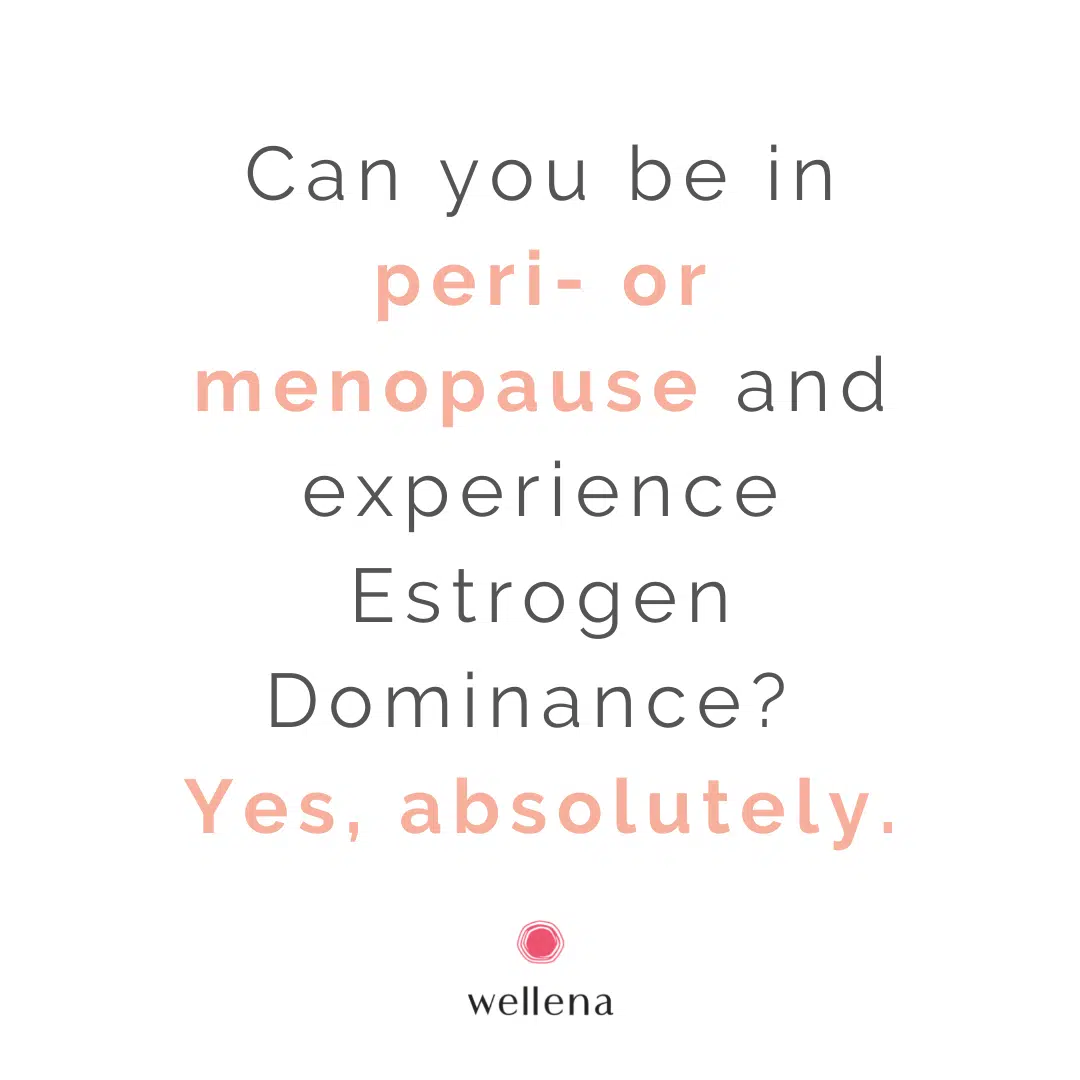
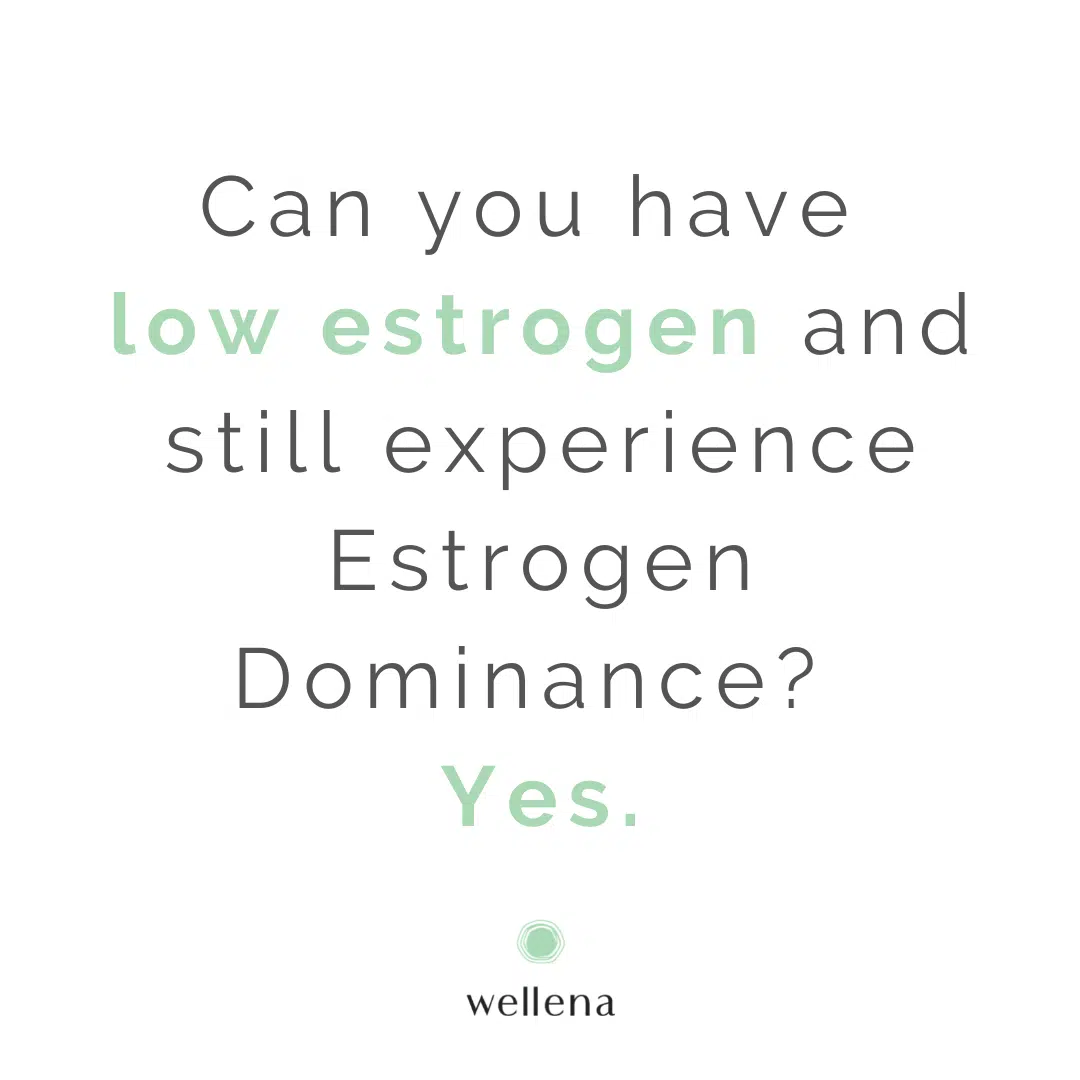
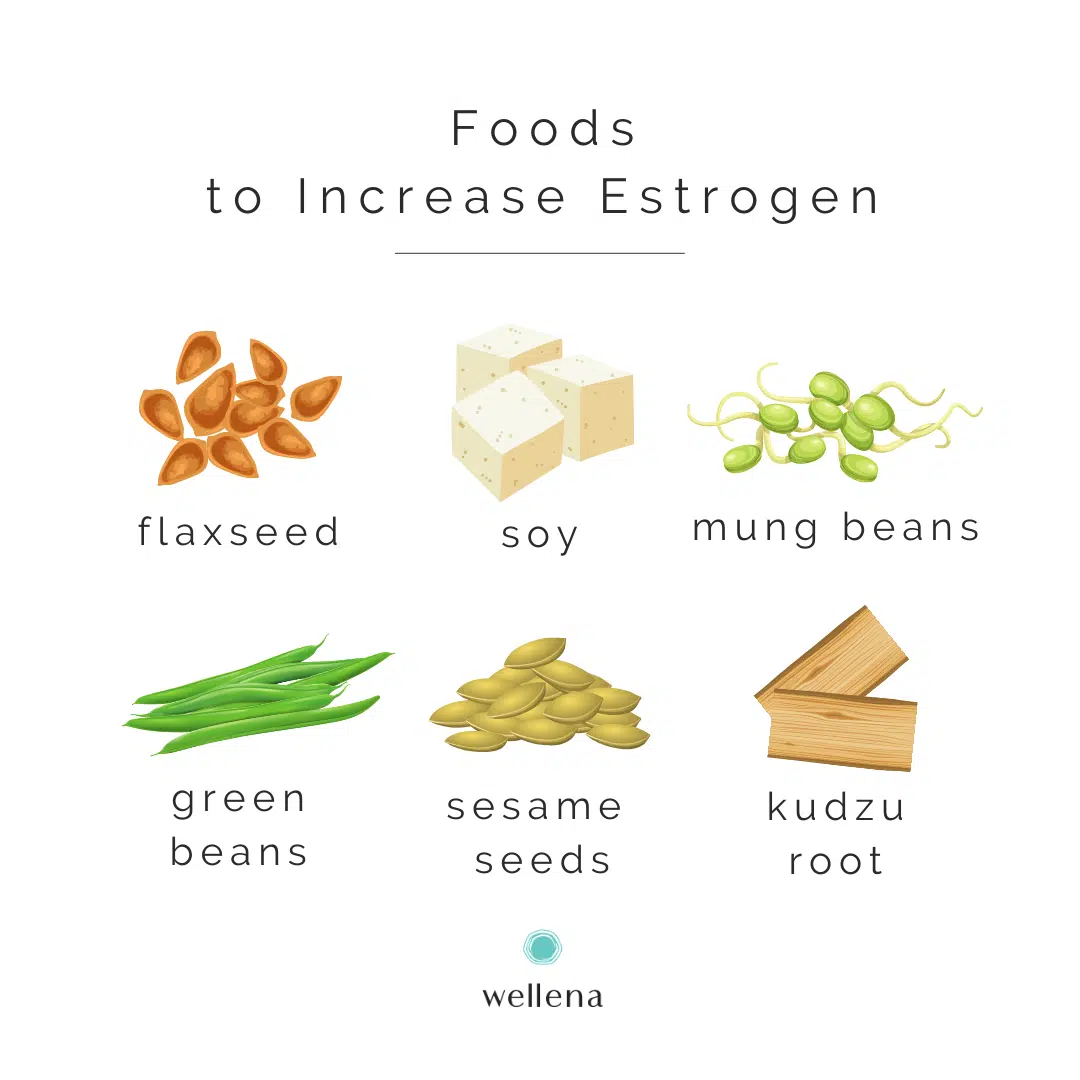

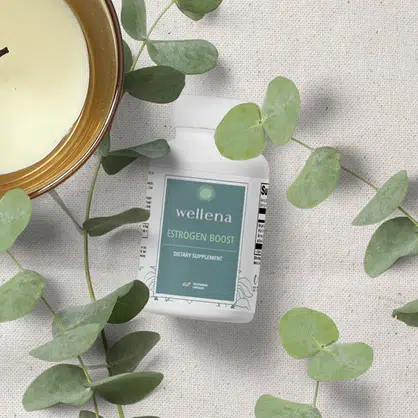
Would you be able to provide some recommendations on where to find some of the less common herbs and ingredients? How do I know if it is a good quality? Thank you in advance!
I’m a little confused because sesame seeds are included here as an estrogen booster but on your seed rotation kit, sesame seeds are used on days 15 to 28 for progesterone boosting. Is it supposed to be pumpkin seeds? Please advise.
What about taking DIM supplement – I started taking 300 mg over 1 month ago to help with horrible belly fat (visceral fat too)…and horrible sweating (hair would get soaked on minimum exertion – dripping wet if cleaning and so embarrassing). Read dosage between 200-400mg daily. I feel overall better. Also heard about broccolli sprouts. Can you comment about these 2 supplements. I heard about them in a metabolic masterclass describing belly fat…definitely a hormone issue! I’ve been to an endocrinologist and he would not prescribe HRT as I was too old – cancer risk.
Brilliant Article explaining Estrogen ,would be Wonderful if article explaining Progesterone and Foods,Herbs,Supplements to boost Progesterone is shared too for Women who don’t want to use Bio Identical Progesterone or HRT..Thank you for Such Informative Articles..
Hi Manisha! The article 10 Natural Ways to Boost Progesterone would be a great place to start!
– Alexandra, HB Team
Absolutely! While this article focuses specifically on foods and herbs, DIM is an incredible supplement and I’m so glad you’ve been feeling better after introducing it. We offer DIM in our Wellena supplements line, which you can find here.
Broccoli sprouts are another favorite among the Hormones & Balance community. We especially love how it helps boost estrogen metabolism and detoxify the liver. You can grow your own and it’s recommended to eat between 1/2-1 cup per day. I love adding broccoli sprouts to my salads, smoothies, or sprinkled over a slice of avocado toast. If you’re not able to eat fresh broccoli sprouts daily, we’ve harnessed the antioxidant power of sulforaphane in Brocco Power.
You can find more information about both of these supplements, as well as Calcium D-glucarate, in the article Best Supplements for Estrogen Dominance.
– Alexandra, HB Team
Thank you for reaching out about this, Jan! Would you please email us at [email protected]? Our Customer Experience team would love help you further. Thank you!
– Alexandra, HB Team
Should we take the estrogen boosting supplements and foods in the first two weeks of the cycle only? Kudzu, soy, flax for example?
Thank you!
Hi Raluca. The first two weeks of the cycle is a great time to focus on these foods and supplements, however they can be enjoyed and utilized by many women at any time of the cycle.
– HB Team
Good day, your information is most valuable for low estrogen. However, I was also prescribed eltroxin 75mg…..can the herbs etc balance thyroid out as well…
Thank you
Giordana
Hi Giordana, estrogen will help support stimulate thyroid hormones. So depending on your bio-individual need, consuming these foods to support your estrogen levels could support thyroid health. We aren’t able to comment on medication interaction, but you may be interested in our online program, Thyroid Detox. Here is the link if you’re interested in learning more, https://hormonesbalance.com/td/join/ ~HB Support.
A bit confused. A lot of the articles and comments reference how to deal with low estrogen, bumping up/increasing Estrogen. What about if you have waaay too much estrogen? I am diagnosed with overactive Estrogen & Progesterone (both high) + hormone positive cancer. Do the same supps/foods/herbs recommended work for both low & high estrogen or should those of us with this marker type be concentrating on something else entirely?
Hi ya,
I came off the yasmine pill around 3 years ago and still dealing with the after math, my skin went crazy,especially innitially, i got spots etc and im now still dealing with that which is my main issue, especially 10 -7 days before my period i get some big ones, coming off the pill i lost the water weight,(not alot) but i could tell a difference, and boobs got smaller also. Im not sure if my hormones are still sorting themselves out or if im low on Estrogen or the opposite…
So i have started DIM nearly 25 days now, i hear it takes about 40-45 days for DIM to start kicking in.. can i take DIM and Pueraria mirifica powder along side it? / or fenugreek -600mg /maca powder. Or which one would be the most effective do you think, especially sorting out my spots if it’s androgens that are causing these hormonal breakouts..
Thank you A x
Hi Yasmin, the supplements and dietary recommendations work to improve the balance of estrogen in the body by improving the liver detoxification pathways. This helps make more clean estrogens over the dirty estrogens and helps our body clear the dirty more efficiently. Therefore the suggestions in the articles can work with both low estrogen and high estrogen because in either case you can be estrogen dominant. ~HB Support
you need to mention about breast cancer patients and prostate cancer for men.
I was told to stay away from anything that would produce estrogen.
Cancer feeds on estrogen and fat.
please provide a list of plants and foods that naturally have estrogen, that is not listed on your site.
I get a lot of different opinions and was also told to eat meat that was hormone free.
Because of so many foods being processed with too much junk, it is causing more cancer.